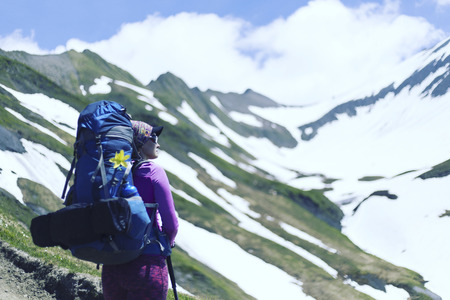1. Understanding Indian Biodiversity
India is truly a treasure trove of biodiversity, offering a vibrant tapestry of flora and fauna that few other countries can rival. From the misty peaks of the Himalayan ranges to the lush rainforests of the Western Ghats and the mysterious mangroves of the Sundarbans, each region boasts its own unique ecosystem. For instance, trekkers in Uttarakhand may spot the elusive snow leopard or Himalayan monal, while those venturing through Keralas Western Ghats are greeted by endemic species like the Nilgiri tahr and Malabar giant squirrel. The Sundarbans, home to the iconic Royal Bengal Tiger, exemplifies how life flourishes even in challenging landscapes.
Celebrating Local Wisdom
Indian communities have long practiced a deep-rooted respect for nature, often guided by age-old traditions and local knowledge. Villagers in the Eastern Himalayas use folk songs to pass down ecological wisdom, and tribal communities in Maharashtra revere sacred groves as biodiversity hotspots. This intrinsic connection to their environment has enabled many Indian communities to live harmoniously with wildlife and conserve delicate habitats for generations.
2. Eco-Friendly Trekking Practices Desi Style
When we talk about sustainable trekking in India, its not just about reducing our carbon footprint, but embracing the ethos of “Desi” living—practices deeply rooted in respect for nature and local traditions. Trekking responsibly in the Indian context means adopting habits that are mindful of both biodiversity and cultural heritage.
Swap Plastic for Desi Alternatives
Plastic pollution is a real challenge in many trekking hotspots across India, from the Himalayas to the Western Ghats. Instead of single-use plastics, trekkers can switch to reusable cloth bags (jholas), steel or copper water bottles (lota or surahi), and banana leaf plates for meals. These alternatives are not only eco-friendly but also celebrate Indian ingenuity.
| Item | Eco-Friendly Alternative | Desi Touch |
|---|---|---|
| Plastic Bottles | Steel/Copper Bottles | Lota/Surahi |
| Plastic Bags | Cloth Bags | Jhola/Thaila |
| Disposable Plates | Banana Leaf Plates | Pattal/Donas |
No-Litter Policy: Leave No Trace, Indian Way
The principle of “Leave No Trace” gets a unique Indian twist when trekkers take inspiration from concepts like safai abhiyan (cleanliness drives). Carrying your own waste down the mountain, segregating biodegradable and non-biodegradable materials, and participating in local clean-up initiatives (Swachh Bharat-style) ensures that trails remain pristine for generations.
Cultural Sensitivity Around Sacred Sites
Indian landscapes are dotted with sacred groves, temples, and rivers—each holding deep spiritual significance for local communities. Respecting these sites means following traditional norms: removing footwear near holy places, refraining from bathing or washing clothes in sacred rivers like the Ganga, and avoiding noise pollution around meditation spots or ashrams.
Checklist for Desi Eco-Trekking:
- Use jholas instead of plastic bags.
- Carry reusable bottles; avoid buying bottled water en route.
- Pack out all waste and join local clean-up drives if possible.
- Respect local customs at religious sites—ask before photographing or entering restricted areas.
- Tread lightly on flora—avoid plucking flowers or disturbing wildlife.
- Embrace community-run homestays or eco-lodges to support sustainable tourism.
Sustainable trekking in India is about blending green practices with a sense of cultural belonging. By following these desi habits, every trekker can contribute to preserving Indias incredible biodiversity while respecting its vibrant traditions.

3. Promoting Responsible Tourism in Local Context
When we talk about eco-friendly trekking in India, it is essential to look beyond just the natural trails and consider the communities that nurture these landscapes. Responsible tourism here means making conscious choices that benefit both biodiversity and the people who call these regions home. By supporting homegrown initiatives, trekkers can ensure their travel leaves a positive footprint.
Stay at Eco-Homestays
Choosing eco-homestays over commercial hotels not only reduces environmental impact but also provides a genuine taste of Indian hospitality. These accommodations are often built using local materials and traditional architecture, blending seamlessly with their surroundings. You’ll wake up to organic chai, enjoy homemade parathas, and witness firsthand how rural families conserve resources—a true ‘atithi devo bhava’ (the guest is God) experience.
Engage with Local Guides
Hiring local guides isn’t just about navigation; it’s about cultural exchange and empowerment. These guides share indigenous knowledge of flora, fauna, and hidden gems that no international tour operator can match. Their stories bring alive the history of sacred groves, rare Himalayan herbs, or the calls of endemic birds like the Malabar Whistling Thrush—making every trek an immersive lesson in India’s living heritage.
Opt for Regional, Organic Food
Supporting village economies by eating local is a win-win for trekkers and nature alike. Whether it’s relishing fresh millet rotis in Uttarakhand or tasting bamboo shoot curry in Nagaland, regional cuisine relies on seasonal produce grown without chemicals. This encourages sustainable agriculture and preserves heirloom varieties unique to each region. Your meal choices directly fund farmers who uphold ecological balance while adding a delicious layer of authenticity to your journey.
By consciously choosing eco-homestays, engaging knowledgeable local guides, and savouring organic regional food, trekkers play a pivotal role in protecting India’s biodiversity and uplifting its vibrant rural communities—one mindful step at a time.
4. Community Participation and Involvement
One of the most inspiring aspects of eco-friendly trekking in India is how local communities are taking a leading role in conservation and eco-tourism. Across the country, indigenous groups and rural villagers are integrating their traditional ecological wisdom with modern sustainable trekking practices, creating models for responsible tourism that protect Indian biodiversity while empowering local people.
Showcasing Local Leadership in Conservation
From the Himalayas to the Western Ghats, community-driven projects are thriving. For example, the Mawlynnong village in Meghalaya—famous as Asia’s cleanest village—manages its own eco-trails, bamboo dustbins, and waste segregation systems. Trek guides are trained locals who share insights into Khasi ecological practices. In Sikkim, homestay cooperatives in Yuksom have developed trekking routes that minimize forest disturbance, with villagers enforcing strict “leave no trace” policies. In Kerala’s Periyar Tiger Reserve, tribal communities collaborate with the Forest Department to offer guided nature walks, blending storytelling about native flora and fauna with practical conservation lessons.
Integration of Traditional Wisdom and Modern Trekking
| Region | Community Initiative | Traditional Practice | Modern Trend Integrated |
|---|---|---|---|
| Ladakh | Women’s Alliance Homestays | Sustainable mud-house building & yak herding | Eco-friendly guesthouses for trekkers |
| Kumaon (Uttarakhand) | Khati Village Conservation Group | Himalayan herbal medicine knowledge | Guided medicinal plant treks for tourists |
| Mawlynnong (Meghalaya) | Village Eco-Tourism Council | Bamboo architecture & rainwater harvesting | Bamboo walkways & green waste management for visitors |
Mutual Benefits: Empowerment and Biodiversity Protection
This community-led approach not only fosters biodiversity but also creates livelihood opportunities. Local ownership ensures that economic benefits stay within the region, promoting pride in cultural heritage and incentivizing further conservation action. Trekkers gain immersive experiences—learning directly from those who have lived sustainably on the land for generations. As a result, Indian eco-trekking is becoming a two-way street: communities share their wisdom while visitors contribute to grassroots conservation efforts through responsible travel.
5. Impact of Eco-Friendly Trekking on Conservation
Positive Outcomes for Endangered Species and Habitats
Eco-friendly trekking is steadily changing the landscape of nature tourism in India, with significant positive impacts on conservation. By minimizing pollution, reducing plastic usage, and following designated trails, trekkers help protect fragile ecosystems like the Western Ghats, the Himalayas, and the Sundarbans. These practices directly contribute to the rejuvenation of endangered species such as the Bengal Tiger, Red Panda, and Great Indian Bustard by preserving their natural habitats from further degradation.
Community Participation and Biodiversity Revival
The involvement of local communities in eco-friendly trekking initiatives cannot be understated. By employing local guides and supporting homestays, trekkers promote sustainable livelihoods that depend on healthy ecosystems. This encourages villagers to participate actively in conservation efforts, leading to visible outcomes like increased sightings of rare birds or animals and the revival of native plant species along popular trekking routes.
Individual Efforts Fueling National Conservation Goals
Every responsible trekker plays a role in helping India achieve its biodiversity targets set by authorities like the Ministry of Environment, Forest and Climate Change (MoEFCC) and the National Biodiversity Authority (NBA). Simple acts—carrying reusable bottles, collecting trash during treks, respecting wildlife corridors—add up over time. As more people adopt these practices, they support larger initiatives such as Project Tiger or Green India Mission, ultimately aiding in the preservation of India’s rich natural heritage for future generations.
6. Spreading Awareness: Desi Trekker’s Role
Desi trekkers have a unique and vital role in promoting Indian biodiversity through eco-friendly trekking. As we journey through the vibrant landscapes of India—from the lush Western Ghats to the mighty Himalayas—we are not just explorers, but also storytellers and ambassadors for nature.
Sharing Stories in Local Languages
One of the most impactful ways to spread awareness is by sharing our trekking experiences in local languages such as Hindi, Marathi, Tamil, Bengali, or Kannada. Whether it’s narrating a thrilling encounter with a rare bird or describing the fragrance of wildflowers after a monsoon rain, using regional dialects ensures that our stories resonate deeply within our communities. These narratives help connect people emotionally to their own natural heritage and encourage them to appreciate and protect it.
Leveraging Social Media—The Indian Way
Social media platforms like Instagram, WhatsApp, YouTube, and Facebook are powerful tools for modern-day trekkers. Posting photos of pristine trails, recording short reels about responsible trekking practices (such as carrying reusable bottles and refusing single-use plastics), and even starting hashtags like #SwachhTrekIndia or #DesiNatureLover can spark meaningful conversations nationwide. When these posts are crafted with elements of Indian humor, folk wisdom, or Bollywood references, they become even more relatable and widely shared among desi audiences.
Inspiring Others to be Nature-Positive
The spirit of “Vasudhaiva Kutumbakam”—the world is one family—runs deep in Indian culture. Trekkers can inspire friends, family, and fellow hikers by organizing clean-up drives on popular trails, conducting biodiversity walks for school kids in local parks, or simply gifting saplings during festivals. By embodying respect for all living beings (as taught by Gandhiji’s principle of ahimsa), desi trekkers set an example that protecting biodiversity isn’t just a hobby—it’s an essential part of being Indian.
Ultimately, every trekker’s small actions—whether it’s sharing stories in mother tongues or championing sustainability online—combine to create a movement that celebrates India’s rich natural legacy. Let’s walk with pride and purpose, knowing that as desi trekkers, we carry the torch for future generations to experience the wild beauty of Bharat.


